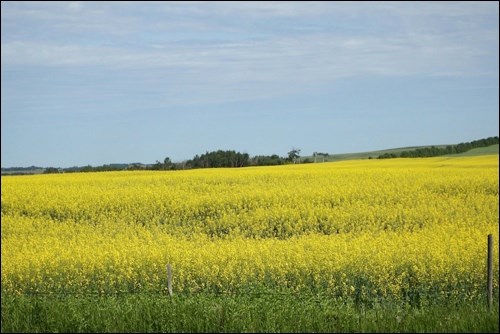GUELPH, Ont. — Mapping the evolution of Canada's farm industry is not as simple as just examining the numbers.
Every five years, Canada's federal government asks us to provide details on who lives in our household. The demographic information is used to guide decisions ranging from school planning to transportation infrastructure to government transfers.
Among the census questions is one that asks if you intend to sell agricultural produce. This may strike you as unimportant because 98 per cent of you will answer 'No.' However, it allows Statistics Canada to determine if you are a farmer. If you answer 'Yes,' you are directed to complete the Census of Agriculture on your farm operation.
The information gathered helps to characterize Canada's contemporary agricultural sector, including the total number of farmers and farms.
And a look beyond the basic numbers reveals a sector that is increasingly diverse.
The definition of a farmer and a farm is based on the potential ability and desire to sell agricultural products. It does not include a minimum sales criterion. Before 1991, such a threshold had to be met. And it still does in the United States, where a census farm is any operation that normally generates at least $1,000 of agricultural produce. In Canada, however, farmers and the farms they operate are self-identified with potentially minimal sales.
The all-encompassing definition of a farm permits a measurement of total agricultural production. Someone who self-identifies as a farmer will be asked to detail the inputs used (i.e. time spent on farm work and area of land cropped) and the outputs produced (i.e. inventory of crops and livestock). Thus, total production of a commodity such as potatoes includes the volume sold by large full-time operators to major processors and those sold by individuals to friends and family.
Determining aggregate measures such as total production or farmland area requires measuring all potential farmers and farms.
However, there are cautions with using such a broad definition of a farm for other purposes.
The 2016 census will likely reveal a continuation of a trend noted over the last 50 years: a decline of about 10 per cent in the number of farm operators and farms over the last five years between censuses. Assuming the trend continues, there are fewer than 200,000 farms in Canada and approximately 275,000 farmers running these farms.
Another trend likely to continue will be the growth in the number of commercial farms with sales greater than $250,000. In addition to its share of the total number of farms, the absolute number will have increased to approximately 50,000. Hence, the decline in the number of farms and farmers will largely be associated with demise of small commercial operations and not those with sales greater than $250,000.
The increase in the number of large commercial farms and the number of small part-time farmers reflects a growing diversity in the farm sector. Two generations ago, the countryside was fairly homogenous with single full-time farmers operating farms that supported single families. Now, many farmers can be involved in a single farm, and a single farmer can run several farms. At the same time, approximately half of the farmers have full-time work off the farm.
The all-encompassing definition of a farmer requires us to be cautious when interpreting the total numbers and averages associated with those numbers. Totals will likely be lower than the last census but the number of farmers with meaningful agricultural production, and to which farm policy is targeted, are likely to grow.
Given the large and likely growing number of very small farm operators, average performance measures will be distorted if we use the aggregate numbers to assess the health of the sector.
Alfons Weersink is a faculty member in the Department of Food, Agricultural and Resource Economics (FARE) at the University of Guelph.
www.troymedia.com



